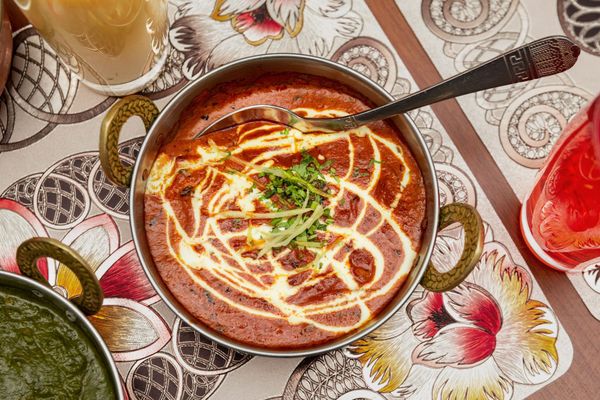The aesthetics of digital games popular in the 90s, like Snake, Minecraft or Tetris, have become deeply embedded in the visual culture of a generation who are now at the beginning of their career. In the exhibition by recent graduate, artist Martin Góth, both the paintings and the visitors become part of a fictional game, based on the aforementioned games’ reference to the square grid.
Martin Góth and Dalma Eszter Kollár, curator, talked to us about the START MENU exhibition which is on view until 13 February at Gallery 111 in Budapest.

Martin began his studies as a painter at the Hungarian University of Fine Arts in 2015, where he met Dalma—who was preparing to become a curator at the time—during the freshman camp. In 2017, they organized their first exhibition together, where the joint works of Martin and Fukui Ryu were exhibited. This was followed by Martin’s solo exhibition at Telep Gallery in 2018, curated by Kristóf Kovács (Gergely Sajnos). The theme was to define the position of Central European artists in relation to the Western institutional system. In 2019, Martin was awarded a fellowship by the Peter and Irene Ludwig Foundation in Aachen, through which he was able to spend a month in Berlin, mapping out the art institutional system there. From Berlin, he continued his studies in Painting & Printmaking at the Glasgow School of Art, on a six-month Erasmus program. “Back at home, during my university years, I was engaged in conceptual art that criticized the institutional system. I now see this as both an effect of institutional pressure and a rebellion against it. So Glasgow was a very refreshing experience for me, it was the place where I started to like painting again—as they had a very different approach to the medium itself: a far more accepting and freer attitude, on behalf of both students and teachers,” said Martin, as he told us about his professional journey, which has greatly influenced the concept of his current exhibition. It’s this free representation, shedding the sublime nature of painting, that he refers to, that also pervades his images in START MENU.
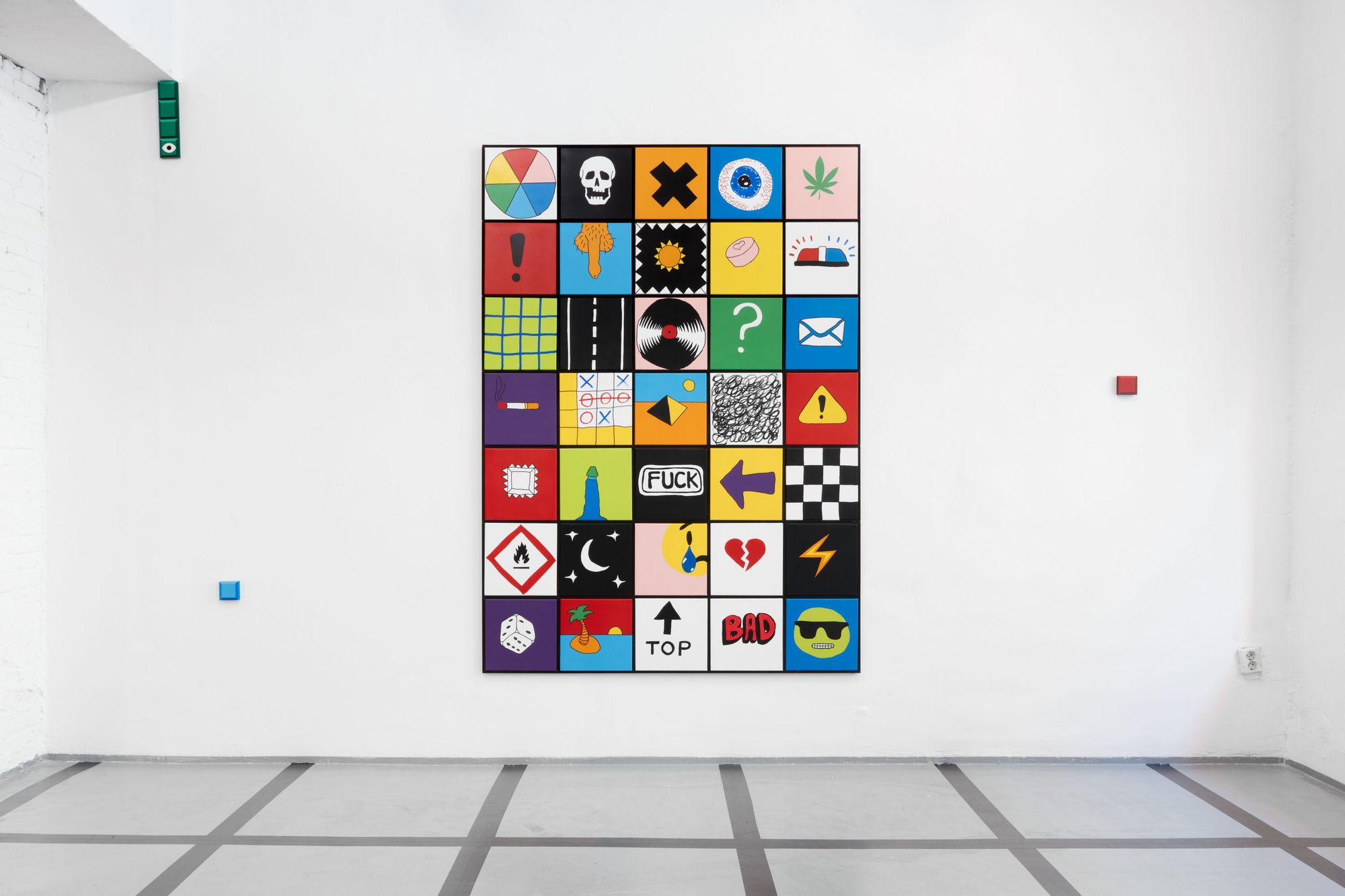
“My thesis was about the phenomenon of “overthinking”, and it was at this point, when I felt I would step out of conceptual art and move towards a more primary, visual direction. I graduated in June 2021, and by then I had my own studio. It was quite obvious after my painting degree that I should start painting, but I didn’t know how to start. This is where my idea for the grid came from, which is always the same size. I wanted to map out the surface of the picture, and it was like a crutch for me at first, like when we first add color to a blank canvas in art class just to get something on it—it’s always easier to get going after, instead of working on an empty page. What followed, was a free associative game. This led to the use of visuals in early computer games and elements of other board games (chess, amoeba, etc.). Once we had decided that we wanted to contextualize the series as a metaphor for the game, I started to add in symbols from my own experiences, stories and dreams. In this context, the exhibition became a trajectory of my own life, a unique game designed from my current impressions,” explained Martin in regard to his series.
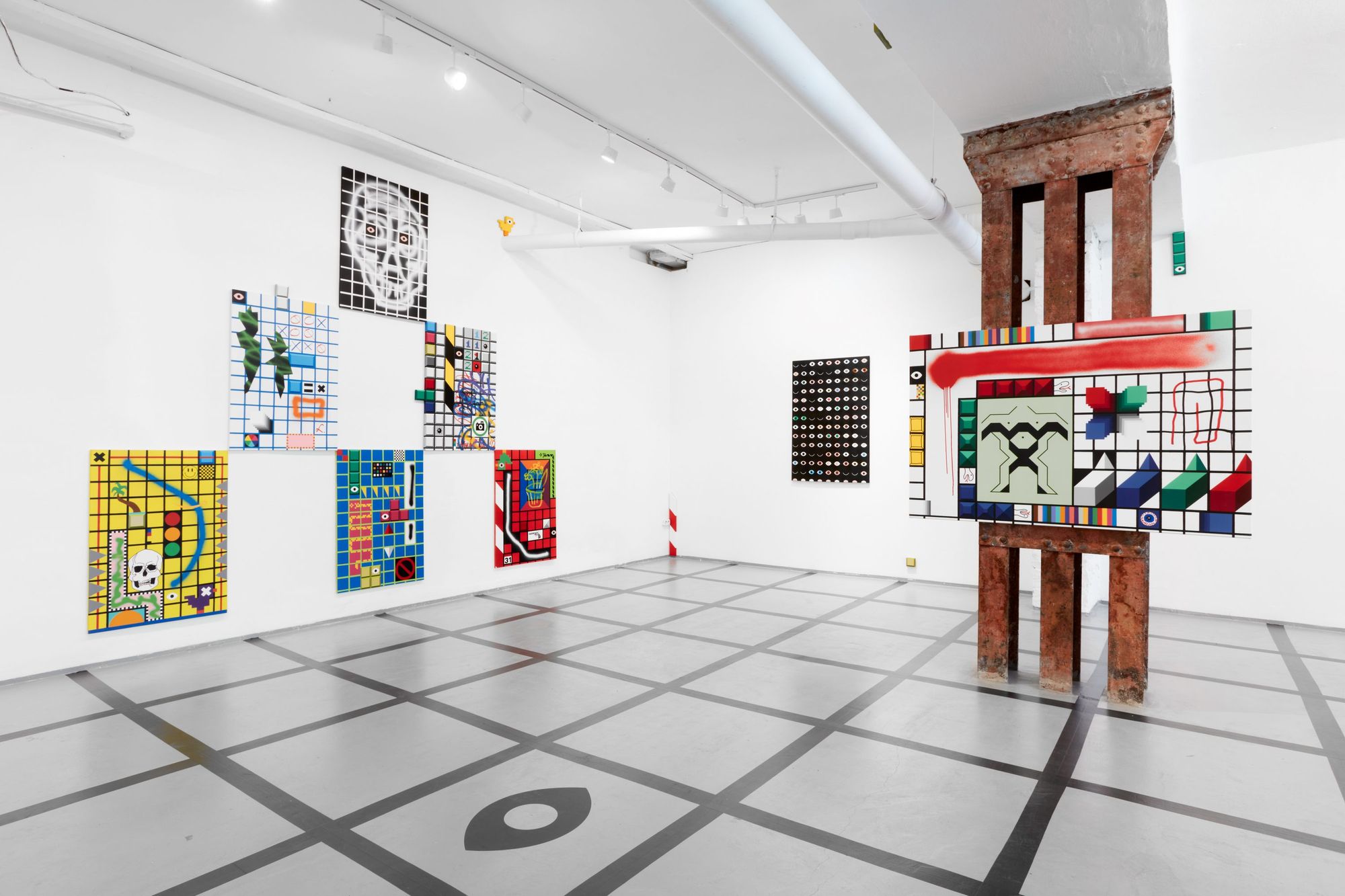
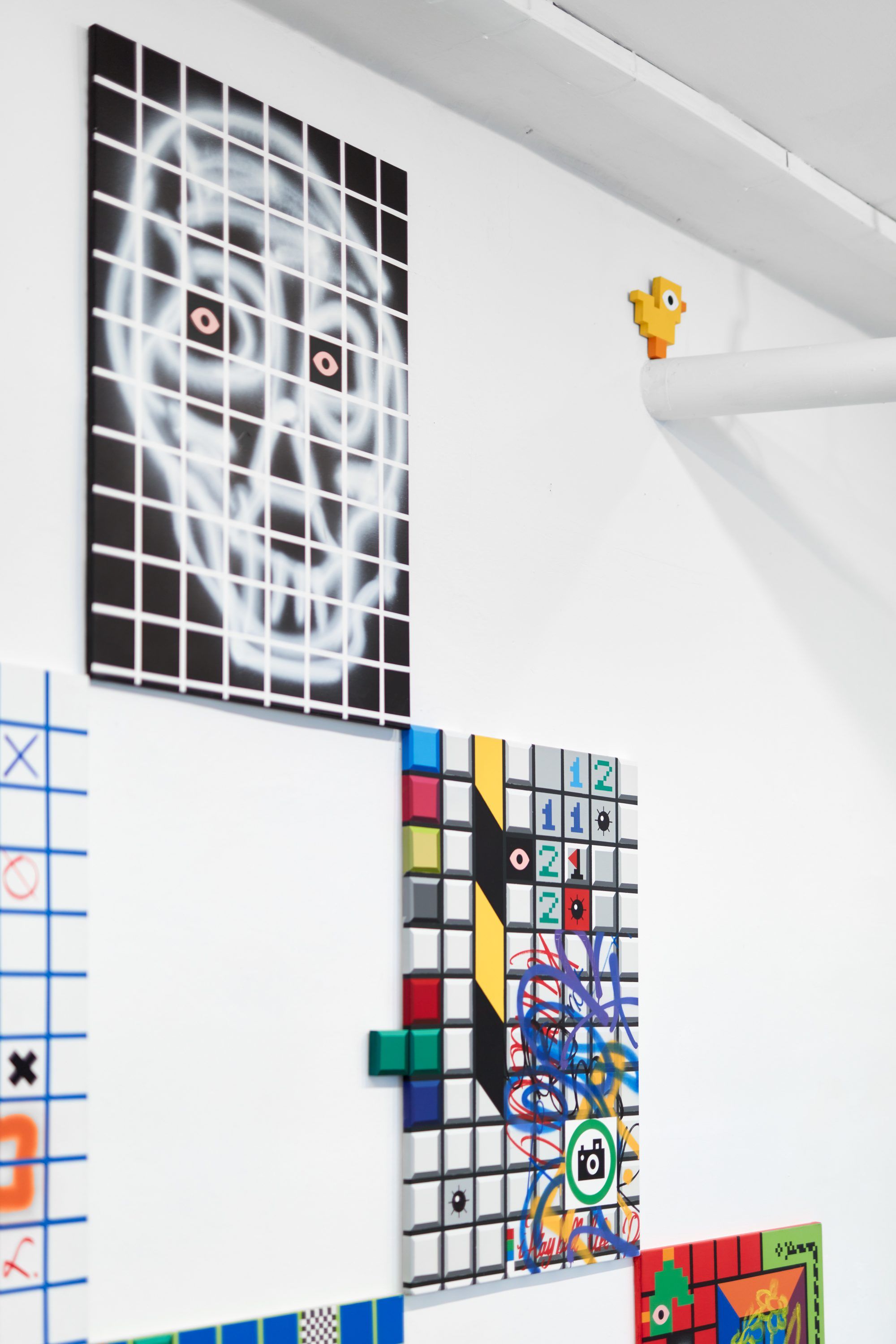
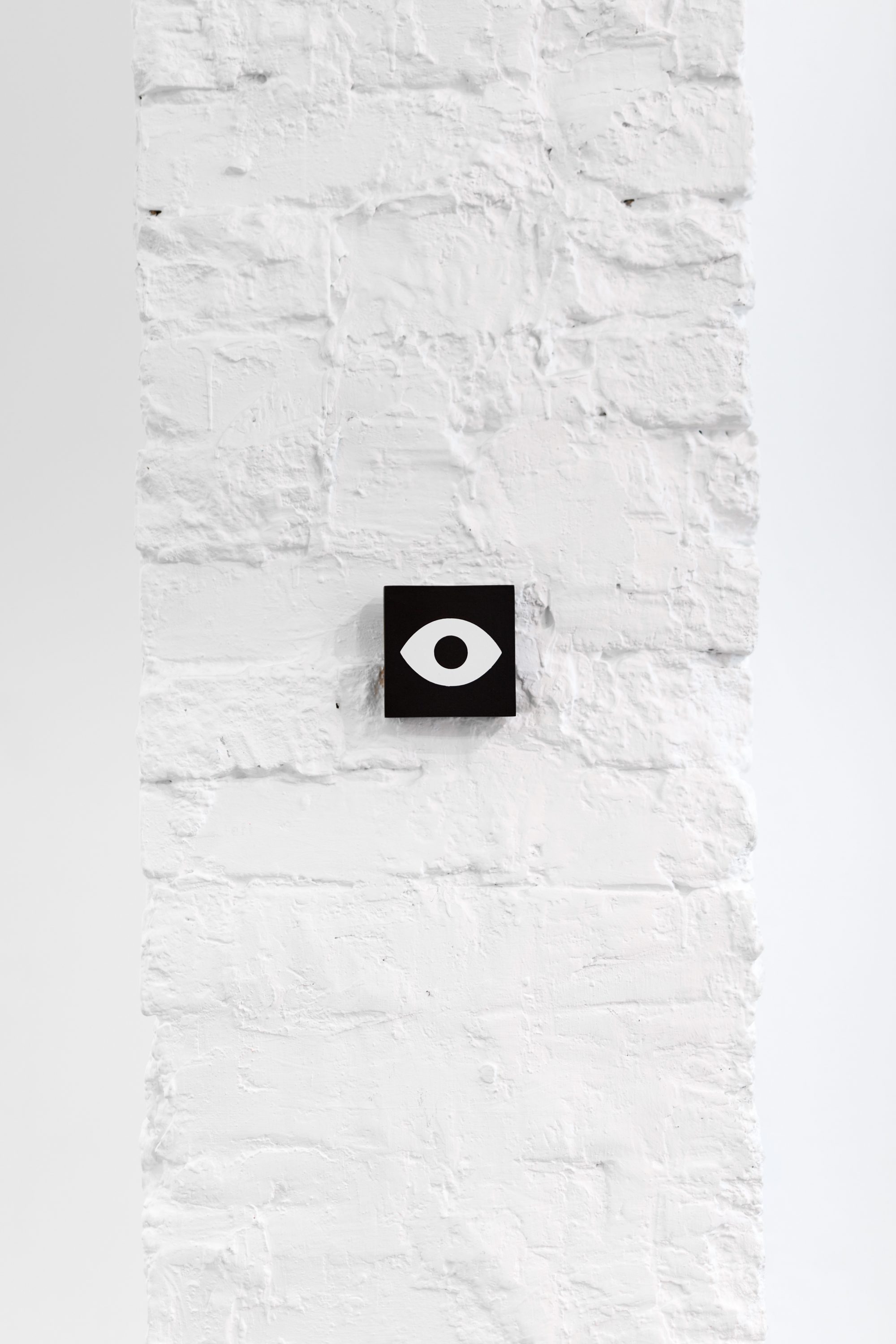
“Unfortunately, graduating in 2021 wasn’t the time for high profile events, so it was clear that we had to organize a solo exhibition for Martin,” Dalma began. “The concept of START MENU was inspired by the artworks: the basis of each painting is a system of 8×8 cm squares and 1 cm wide lines separating them, and Martin has filled them with an array of personal stories, visual gags and fictional characters. Together, these symbols represent online communication, typical characters of computer games, emblems of global brands, the visual identity of different trends in electronic music, as well as symbols of certain narcotics and their effects. These symbols are displayed in the details of his artworks scattered around the exhibition space. Martin contrasted freehand painting with masked, plottered, digitally enlarged—basically, mechanical painting processes. However, the images are not only figurative references to board and computer games but are in fact actually part of a fictional game invented by the artist. It was during one of our studio meetings that the idea was born that if we view a painting as a map of a playing field, then why not make the overhead view of the exhibition (as seen on the guide, which along with the rest of the graphic design elements can be credited to Zsófia Láposi) the start menu. The map of the entire game is a live-action blow-up of the grid of paintings, magnified ten times. So once standing in the gallery space, the viewer is also drawn onto the map, into the start menu of the works on display. And the title of the exhibition—START MENU—was also perfectly suited to the occasion, as guests can see one of the first solo shows of a recent graduate artist,” added Dalma. At the exhibition opening, beer was at hand, and techno was playing—I had the impression that Martin’s work makes a whole generation feel like they too, can have their say when it comes to art.
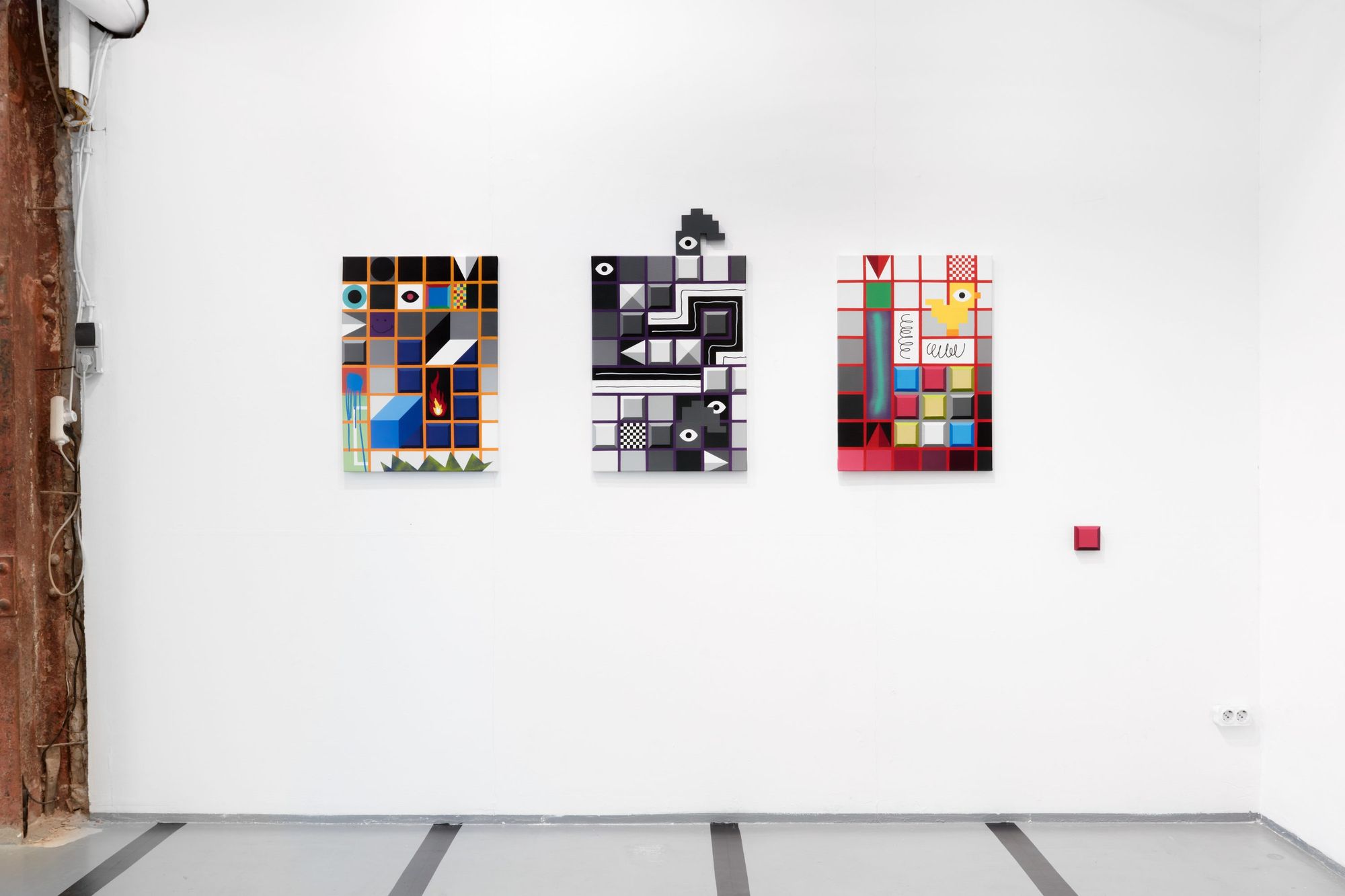

Photos: Dávid Biró
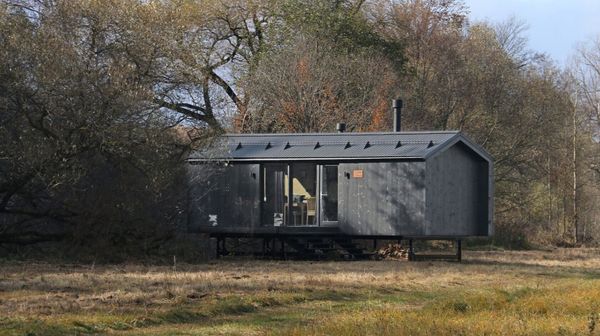
A house that can be built in 24 hours? It exists!
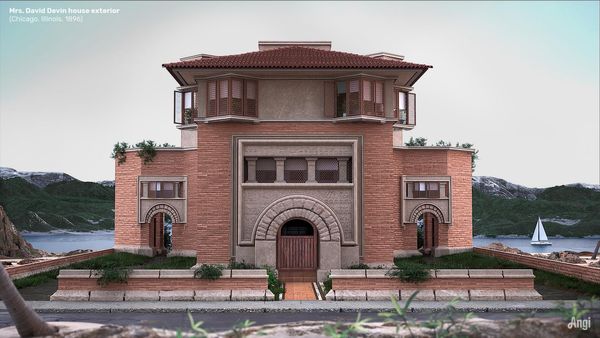
Unbuilt gems of Frank Lloyd Wright come to life in 3D
